Social media has become the hub for entertainment, brand engagement, and content consumption today. According to the Trends 19 report by the Global Web Index, people are using social media not just for entertainment or staying updated with the latest news but also to research products, shop, and share their brand experiences.
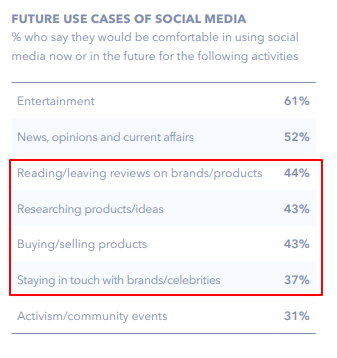
What’s more?
A whopping 54 percent of internet users aged 16 to 64 years use social media to research products and frequently engage with brands on these platforms.
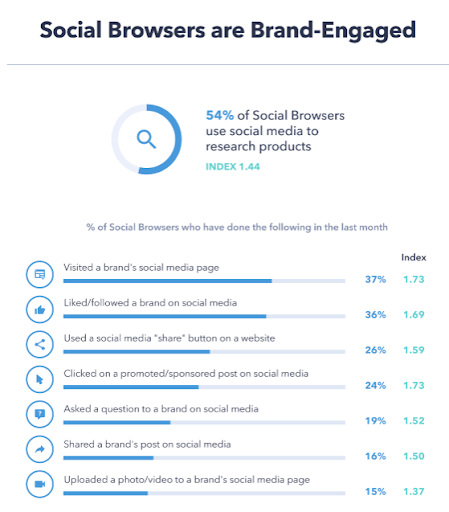
The modern digital customer is increasingly getting accustomed to the concept of social selling. An infographic by HubSpot shares that 71 percent of customers shop based on social media referrals and user-generated content shared by influencers.
If you want to put your business on the fast track to success, it’s needless to mention that you should strengthen your presence on social media platforms.
But engaging and converting people on social platforms is anything but easy. This objective can only be achieved by inspiring your followers to take an intended and useful action, such as sharing your brand story or hitting the CTA button on your page.
How can that be done?
I have a few tips for you that will help you engage your audience and boost your social media conversion rate.
1. Create Content as per the Platform
Each social media platform caters to a different set of audiences. Hence, you need to have a clear understanding of each of these channels, the type of audience, and how they communicate on that platform. Check out this table to learn about the top social media channels available to marketers today.
A recent report by Sara Fischer, Media Reporter for Axios, reveals that certain topics perform well on some platforms but fail on others. This is because of the native format of the platform and the reasons people visit it are different. For instance, posts related to politics tend to take off on Facebook and Twitter. On the other hand, posts with heavy visuals and videos work well on Instagram and Pinterest.
- Who is your target audience?
- Which platform are they active on?
- What type of content do they prefer? Do they like visuals or videos? Do they prefer downloading white papers or reports?
- How can I create content that fits in naturally?
You can also take help of social media analytics tools to find out which type of content is working on a particular social platform. It will help you make a better content plan based on the right statistics, for each social media platform.
So, stop cross-posting the same content on all your social accounts. Ask yourself these questions to craft unique content for every social platform your audience is active on.
The 10:4:1 rule is a tool that can help you optimize your social media content strategy and boost your customer engagement efforts.
The rule is essentially a ratio, and here’s what it states –
For every 15 social media posts, 10 should link to content from other sources (third-party articles), four should link to your content, and one should be your sales pitch or call to action.
Here’s how this ratio should be used to create and share awesome social content that not only sparks conversations but also conversions.
a. Link to Third-Party Articles
Ten (of the total 15) posts should link to third-party content like the ones posted by subject-matter experts or key opinion leaders in your industry. Choose posts that are relevant to your niche and interests your target audience. Sharing content from such authoritative sources will boost your trustworthiness on social media, positively influencing conversions.
b. Link to Your Blog
Four out of 15 posts should link to the content on your company blog. Since your audience already trusts you and expects nothing but the best content from you, share four of your most insightful and relevant posts. Use video content, infographics, and visual content to engage your audience and add value to them, thereby encouraging them to share it.
c. Call to Action
Finally, one of your 15 social posts should be a call to action where you should request your followers to click on a link to the landing page, subscribe to your blog, visit your online store, or download a white paper. We will learn more about this further in the post.
Content is the cornerstone of social media marketing. So use a social media calendar tool for your publishing using the 10:4:1 ratio to gain authority and trustworthiness and improve your conversions.
3. Prioritize Relationships, Not Follower Count
As a marketer, it can be easy to get actively pursue metrics like follower count, likes, comments, and shares. However, these are merely vanity metrics. What you should be actually focusing on is customer engagement and improving your bond with your audience.
Answer this simple question.
Would you prefer having 200 followers who regularly engage with your posts or 15 thousand followers who ignore your content?
The former option is far more valuable as you have built a strong bond with these 200 followers who can then be your brand advocates. This engaged community can endorse your brand, thereby strengthening your social presence.
Here are a few quick tips for building a lifelong relationship with your audience.
Social listening is a great way to learn about your audience’s opinions, preferences, and buying behavior. You can gain interesting insights by merely going through the posts, reviews, and comments shared by them. Further, it can help you improve your customer service which is the foundation of building strong customer relationships.
Use social listening tools like Hootsuite, Google Alerts, Social Mention, and Brandwatch to track keywords, brand names, product names, and competitor mentions. These tools can help you listen, converse, and build relationships with your existing and potential customers.
Joining social media groups and communities in your niche to have a grasp of the latest trends and connect with your prospects.
b. Genuinely Try to Address Customer Concerns
Most businesses use at least one social channel to promote their brand and connect with their audience. Hence, social media has become an important platform for customers to get in touch with brands and share their concerns.
When a customer contacts you through a social channel, your response should be able to achieve two objectives –
- Address the customer’s concern
- Send a positive message to current and future potential customers
Moreover, remember to welcome all types of reviews, especially negative ones. Consider the following when responding to negative reviews.
- Be prompt and polite in your response
- Take responsibility and apologize for the inconvenience caused to the customer or for the poor experience (even if it is not your fault!)
- Offer effective solutions to address the customer’s concerns
- Once you have tackled the issue, remember to mention it again, sending a positive signal to your audience.
Being there when the customer needs you most shows that you are genuinely interested in their concerns, thereby laying the foundation of a long-term healthy relationship.
c. Show Some Love
Anything from a simple thank-you response to offering a special discount to your engaged followers can raise the level of audience engagement and strengthen relationships. For instance, highlighting a follower’s review or comments will not only show them that you read and care about their reviews but also act as social proof for others.
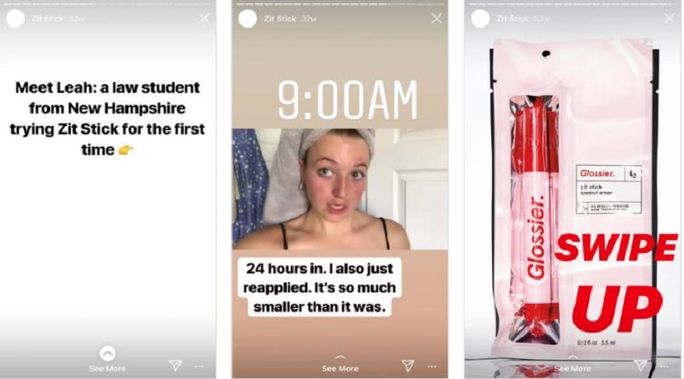
Similarly, reposting your active followers’ UGC and reviews is a great way of thanking them for their loyalty and attracting new leads. Check out how Zit Stick uses real-life user-generated content to convince their followers that this product effectively controls zits. Such posts come across as authentic and not too ‘salesy’.
If you pay attention to details, you will realize that the most successful brand campaigns strive to form a strong human connection with their audience. This is because people like engaging with brands having a human face, as opposed to a faceless business that uses robotic marketing tactics.
Humanizing your campaign strengthens your brand identity and trustworthiness and encourages people to engage in conversations. For instance, adding your name or your team member’s name on your social posts, tweets, or status updates tells the audience that a real human is behind these.
A human face makes posts more relatable and human, winning the audience’s trust and encouraging them to engage in a conversation. Notice how Flo from Progressive, an online insurance firm, makes a boring topic like insurance so interesting. Their tweets are all fun and engaging.
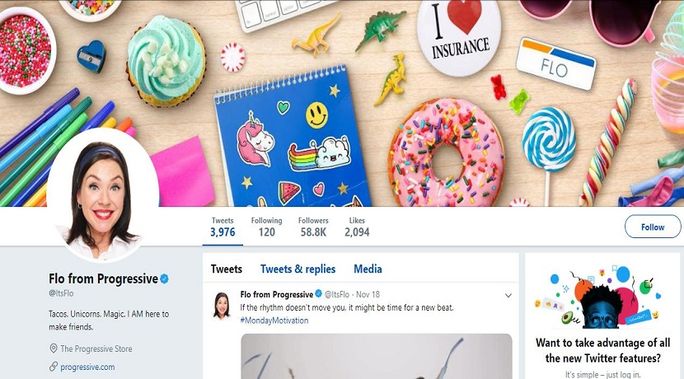
Another way of adding a human face to your social media profile is by sharing behind-the-scenes images and videos. See how IdeaPaint shares names, pictures, and videos of their team, ongoing projects, and achievements to share what they do and keep their audience interested.

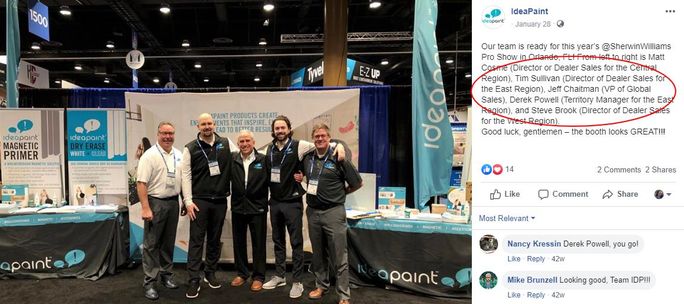
Sharing such engaging and relatable posts at regular intervals will add real-person value to your brand on social media. Several brands also crack jokes, share funny videos of their team, or openly converse with their audience to boost their human social media presence.
5. Use a Compelling Call to Action
After all the hard work you have put in to engage your audience, you definitely want them to take action in your favor. A solid CTA or call to action can work wonders for you in this matter, persuading your followers to sign up, download a report, contact you, or visit your website.
Here are a few pointers to consider when creating an effective social media CTA.
a. Define the Desired Action
What action do you want your audience to take? Do you want them to share your post, click on a link, or subscribe to your page or blog?
b. Create a Sense of Urgency
Adding phrases like ‘Offer expires on December 31st,’ ‘Order now and claim your free gift,’ or ‘Limited period offer’ creates a sense of urgency, persuading users to act before it’s too late.
c. Don’t Forget the Hook
A hook is required to capture the attention of the audience, preventing them from leaving the page. Addressing the WIIFM (What’s In It For Me?) can persuade them to stay on the page and take the desired action.
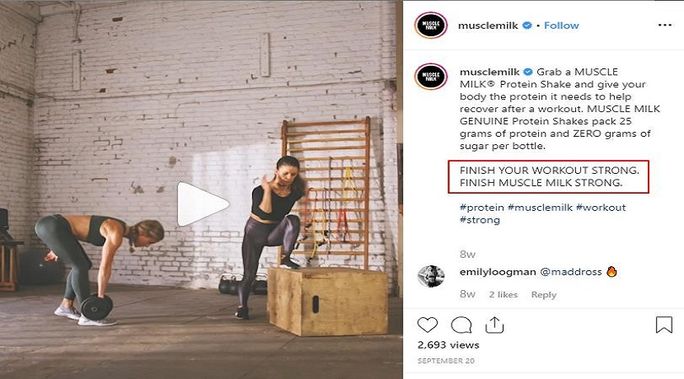
Notice how Muscle Milk clearly shares the product benefit to the readers, showcasing how people consuming Muscle Milk will feel during and after a workout.
d. Offer an Incentive
More often than not, people need that extra nudge to make a decision or take a step like sharing your post. Offering an incentive like free shipping, a giveaway, or a discount is a great way to motivate your audience and lure them into clicking the CTA.
Social media algorithms are constantly evolving, and so is your target audience. Hence, it is important to split or A/B test each element of your social media posts, thereby improving their effectiveness and reach.
A/B testing is a popular method used by marketers to optimize their content; yet, it can be tricky to test multiple variations and elements.
Remember the golden rule – Test one element at a time.
You can use scheduling tools to pre-schedule your posts , that will save you a whole lot of time. Tools like SocialPilot, Buffer and Hootsuite are popular choices among the social media marketing circle.
Testing more than one element for a single campaign can lead to confusing results. For instance, if you are A/B testing a link to the landing page and testing that landing page too, you will never know the exact reason for the increase in leads.
Finally, count on tools like Google Analytics and Google Optimize, Optimizely, and AB Tasty to generate more leads from the visits your social page gets.
Wrapping Up
Conversion is the core objective of every marketing strategy, including social media marketing. However, engaging social media traffic and driving conversions isn’t an easy undertaking. This is because no one comes to a social media platform with a definite intention of taking action. In fact, they may completely ignore you of your promotion comes across as too pushy.
Therefore, businesses should use effective conversion optimization tactics to engage their social audiences and add value to them. Go ahead and implement the tips and tricks shared in this post to improve your brand awareness and boost your social conversion rates.



